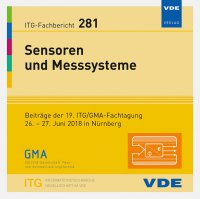What to learn from Machine Learning: Optimization of Operation Mode and Data Evaluation of Optically Activated Semiconducting Gas Sensors
Conference: Sensoren und Messsysteme - 19. ITG/GMA-Fachtagung
06/26/2018 - 06/27/2018 at Nürnberg, Deutschland
Proceedings: Sensoren und Messsysteme
Pages: 4Language: englishTyp: PDF
Personal VDE Members are entitled to a 10% discount on this title
Authors:
Wagner, Thorsten (Paderborn University, Warburger Str. 100, 33098 Paderborn, Germany)
Abstract:
Optical activation of semiconducting metal oxide based gas sensors offers a new way of improving the performance of these cost-efficient and highly sensitive devices. Exposure to light in the UV/VIS range - as opposed to high temperature operation in the range of 300 to 500 °C – is a low power alternative to speed-up reaction kinetics and to balance adsorption- desorption equilibrium. However, there are some fundamental differences in the activation process compared to thermal activation, which typically prohibit static operation under constant illumination level. To make a virtue of the resulting necessity to utilize cyclic illumination profiles, multi-signal data evaluation techniques can be applied to the sensors response. To optimize the information content in the data, various operating parameters need to be tuned, as e.g. shape and intensity of the applied illumination profile. Here I present a new approach utilizing a simple neural network (multilayer perceptron) to design a suitable illumination profile and to find a simple evaluation algorithm by analysing the neural network’s coefficients. The concept is demonstrated on optically activated nanostructured indium oxide (In2O3) films for room temperature humidity and ozone sensing.


